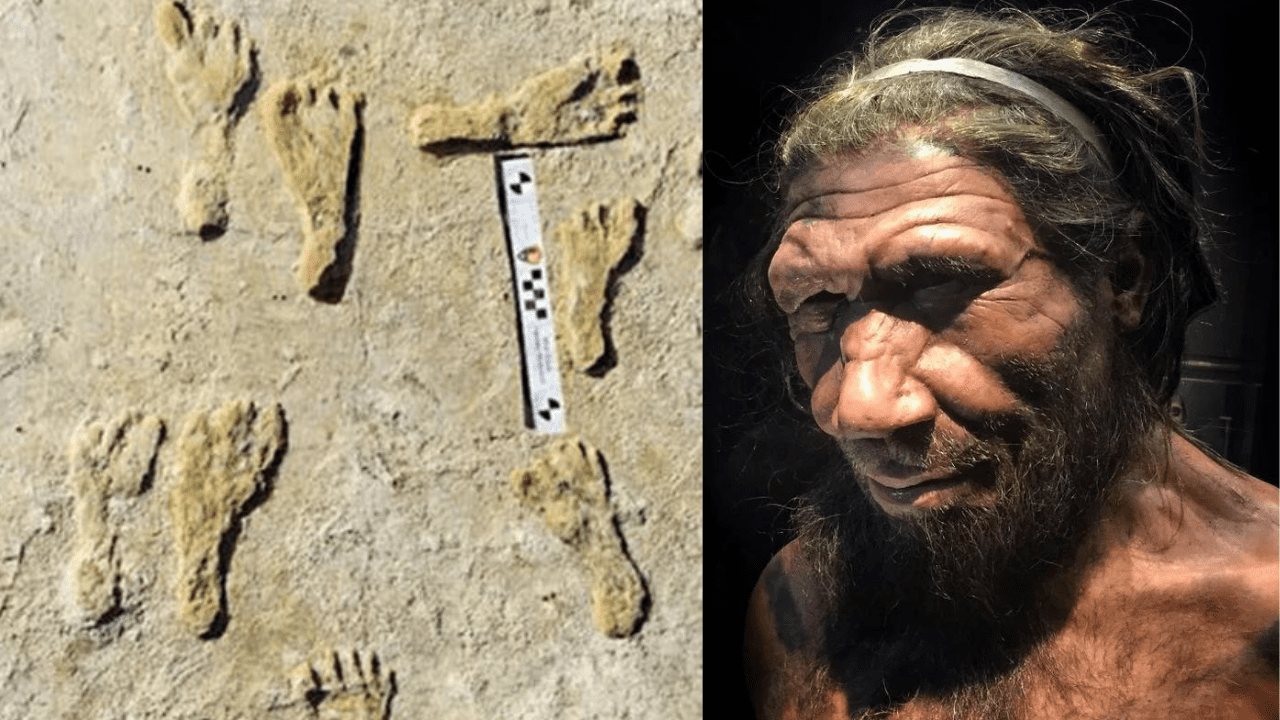Early Human Footprints Found In USA Rewrites History | Humans Arrived In America Earlier Than Previously Thought!
The history of human migration is a fascinating story of exploration, adaptation, and survival. For decades, the general theory held that humans first set foot in North America around 14,000 years ago. It talks about humans migrating across a land bridge from Asia into what is now Alaska. However, recent groundbreaking research has shaken up this long-held belief. It suggests that humans arrived on the American continent thousands of years earlier than previously thought! In 2021, the finding of ancient human footprints in the mud of White Sands National Park in New Mexico shocked the archaeological community. These footprints were initially believed to be between 23,000 and 21,000 years old. But they have now challenged the current narrative of early human migration into the Americas….
The history of human migration is a fascinating story of exploration, adaptation, and survival. For decades, the general theory held that humans first set foot in North America around 14,000 years ago. It talks about humans migrating across a land bridge from Asia into what is now Alaska. However, recent groundbreaking research has shaken up this long-held belief. It suggests that humans arrived on the American continent thousands of years earlier than previously thought!
In 2021, the finding of ancient human footprints in the mud of White Sands National Park in New Mexico shocked the archaeological community. These footprints were initially believed to be between 23,000 and 21,000 years old. But they have now challenged the current narrative of early human migration into the Americas. Critics were skeptical of the dating methods, particularly the dating of seeds found in the footprints. This is because they could be influenced by various factors.
Age Of Human Footprints Rewrites History!
Now, in a groundbreaking study led by researchers at the U.S. Geological Survey (USGS), these early human footprints’ age has been confirmed. They have used two different dating techniques. The results provide clear evidence that humans were indeed present in North America during the last Ice Age. This is rewriting the history books on the continent’s colonization.
The Clovis culture, named after a site in New Mexico dating back 13,500 years, has long been considered the earliest human culture in the Americas. This culture is characterized by unique stone and bone tools linked with Pleistocene animals like mammoths. Despite some upcoming evidence of earlier human activity in the Americas, the Clovis-first theory has stayed dominant.
Humans trod the landscape of North America thousands of years earlier than previously thought, according to new research that confirms the antiquity of fossilized footprints at White Sands National Park in New Mexico using two further dating approaches. https://t.co/chxA3EWsWW
— Reuters Science News (@ReutersScience) October 5, 2023
However, the discovery of these ancient footprints and their age range raises intriguing questions. If humans were indeed present in North America 23,000 to 21,000 years ago, it challenges the idea that the first settlers came after the land bridge was exposed following the melting of Ice Age glaciers. Instead, it suggests that early inhabitants might have entered America through a different route. They could have possibly come via Alaska before it became engulfed by glaciers or along the coastal regions.
The study’s credibility faced criticism, particularly regarding the dating of seeds found in the footprints. The seeds came from a common aquatic plant known as spiral ditchgrass. Dating aquatic plants can also be tricky because they absorb dissolved carbon from surrounding bedrock. This can potentially lead to inaccurate radiocarbon dating results.

More Dating Methods To Prove The Results
To address these concerns, the researchers used two additional dating methods. First, they focused on radiocarbon dating of conifer pollen, extracted from the same layers as the original Ruppia seeds. The results from both sources aligned, lending significant weight to the initial dating of the footprints. The pollen samples also provided useful insights into the environmental conditions during the footprints’ creation. The results show a cold and wet glacial climate vastly different from the current desert landscape of White Sands.
Additionally, the team used optically stimulated luminescence dating to determine the last time quartz grains within the footprint-bearing layers were exposed to sunlight. This method further supported the radiocarbon results, supporting the case for the footprints’ age range.
With three independent lines of evidence linking in the same time frame, it becomes highly unlikely that all three are wrong or biased.

This multi-pronged approach significantly strengthens the argument for the presence of humans in North America more than 20,000 years ago.
The implications of this discovery are profound. It challenges the traditional timeline of human migration into the Americas. The research also opens up new possibilities for understanding how early humans navigated and thrived on this continent. The idea that America’s first settlers may have arrived through Alaska before glaciers covered the land or along the coastal regions challenges the conventional narrative and encourages further exploration of alternative migration routes.
Conclusion
The finding of early human footprints at White Sands National Park in New Mexico and the following confirmation of their age marks a significant breakthrough in our understanding of human history in the Americas. It reminds us that our ancestors were not only resilient but also more resourceful and adaptable than we might have imagined. As scientists continue to uncover the secrets of our past, one thing is certain: the story of human migration is far from over, and each discovery brings us closer to finding the mysteries of our ancient origins.
Also read,






